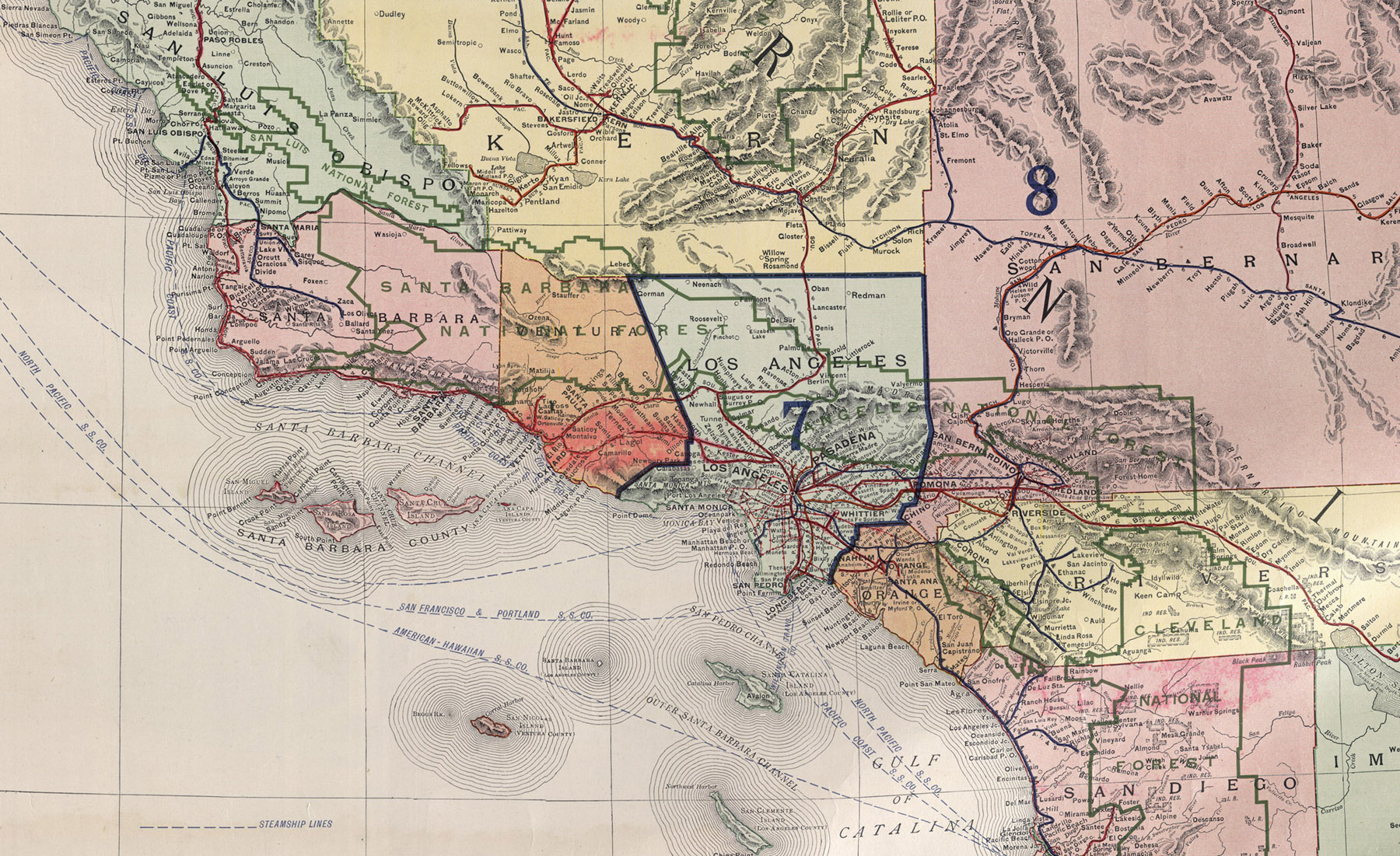
#167 Tharp's Log
Tharp's Log is a hollowed giant sequoia tree in Sequoia National Park. Led here by the Yokuts Native Americans, Hale Tharp was the first modern pioneer to discover the Giant Forest. He lived in this log 'cabin' in the summertime from 1861 to 1890, the year the park was established. Adjacent Log Meadow was the perfect spot for Tharp to raise his cattle. This National Register of Historic Places Landmark is a great mild hike for any visit to the park.
#155 Palms to Pines National Scenic Byway
Palms to Pines National Scenic Byway is one of the most scenic drives in Southern California. From the desert ecosystem of Palm Springs and the Coachella Valley to the snow-covered peaks of the San Bernardino National Forest, this winding road takes you from sea level to peaks more than a mile high in pristine wilderness. Beautiful overlooks offer dramatic views that soar for miles.
#153 Devil's Punchbowl Natural Area
Devil's Punchbowl Natural Area is a grand assortment of sandstone boulders and cliffs at the base of the San Gabriel Mountains National Monument. At 4,750 feet, the San Andreas Fault travels directly beneath the park helping to create its striking formations. A one mile trail takes you down into the heart of the punchbowl for an up-close look at this geological wonderland.
#152 Yosemite Falls
At 2,425 feet, Yosemite Falls is the highest waterfall in Yosemite National Park. Water passes through three gorgeous tiers before making its final plunge to the ground. It is one of the most iconic sights of the National Park Service and the 6th tallest in the world.
#147 San Emigdio Mountains
The San Emigdio Mountains are a beautiful transverse mountain range in Los Padres National Forest. Rising high above the southern portion of the Central Valley, these mountains turn brilliant tones of green in the springtime and were named for Saint Emygdius, a Christian Martyr.
#143 Kwaaymii Point
One of the most beautiful views in Southern California is Kwaaymii Point. Located on the Sunrise Highway in the Laguna Mountains, the point offers a jaw-dropping vista of the Colorado Desert from a mile high in Cleveland National Forest. The Pacific Crest Trail also passes this point and offers great hiking. A group of Kumeyaay Native Americans called the Kwaaymii have called this land home for thousands of years.
#142 Lost Grove
Lost Grove in Sequoia National Park contains over 400 magnificent giant sequoia trees. Along generals highway, the grove can easily be accessed and explored by all. The grove sits on the edge of the park and provides seclusion from the popular Giant Forest. Get lost and enjoy solitude in this peaceful grove.
#131 Crystal Cave
Crystal Cave is a beautiful cave in Sequoia National Park and one of 240 known caves in the park. Amazing polished marble chambers and formations decorate the walls and ceilings. At a constant 48 degrees, Pleistocene era fossils and minerals are protected among stalactites and stalagmites. Crystal Cave is a must see and a great way to discover the subterranean of Sequoia.
#121 Chicago Stump
In the late 1800's, nobody in America believed that such a giant tree existed on Earth. To challenge believers, the life of the thousand year old General Noble Sequoia Tree ended. The stump then traveled by train to its new home at the 1893 World's Columbian Exposition in Chicago. At the cost of $15,000, nearly half a million in today's dollars, this tree was cut 50 feet from the ground then hollowed into a 14 foot reassembled section at the fair.
Today in Sequoia National Forest on the border of Kings Canyon National Park lies the remaining stump. Several surrounding stumps can be explored as a reminder of the unfortunate Sequoia logging past. *4 wheel drive recommended to get to the stump
#120 Santa Rosa and San Jacinto Mountains National Monument
Santa Rosa and San Jacinto Mountains National Monument preserves 280,000 acres in the peninsular mountain ranges. The Agua Caliente Band of Cahuilla Indians own and manage a large portion of the monument of which house many sacred sites. It is a land of extremes rising from the heat of the desert floor to the snow dusted peaks 10,000 feet high.
Palms to Pines National Scenic Byway winds through the encompassing mountains and is a great driving overview of the monument. The National Landscape Conservation System maintains the monument as a 'healthy, wild and open' space. Unlike many other parks and monuments, not many mapped trails or sites exist. It is a place for deep reflection and solitude. The beauty of nature awaits!
























